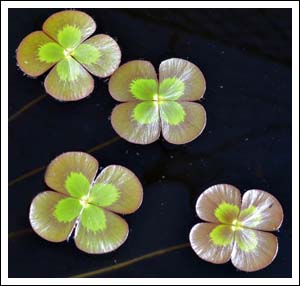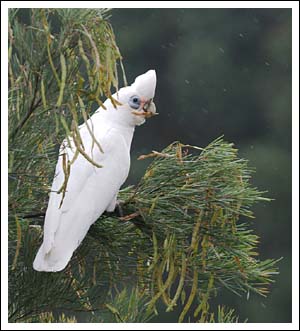A visit to a friend’s garden was productive, butterflies were nectaring on some tall everlastings, making for some nice pictures.
Painted Lady, Vanessa kershawi, a pristine specimen.
And on the fishpond, floating Nardoo foliage.
It is always good to find a St. Andrews Cross spider, Argiope keyserlingi, in the garden, and this one came with a bonus, the male in position on the decorative silk cross behind the female.
This is the time of year for the Australian Jewel Spider, aka Spiny Spider, Austracantha minax, and there is what can only be described as a colony in the Burrendong Beauty hakea. Strangely, the twenty or so spiders are all facing into the shrub, south, away from the sun, meaning only their interesting under-sides could be photographed.
Out in the paddock there is plenty of seed available for cockies and friends,
however, on a showery morning the Little Corellas found the seed on the Snowy River Wattle to be more inviting.
And with plenty of grevillea flowers on tap the young Red Wattlebirds have been growing quickly and becoming independent,
and learning to be wary.
Click pictures to enlarge.

























